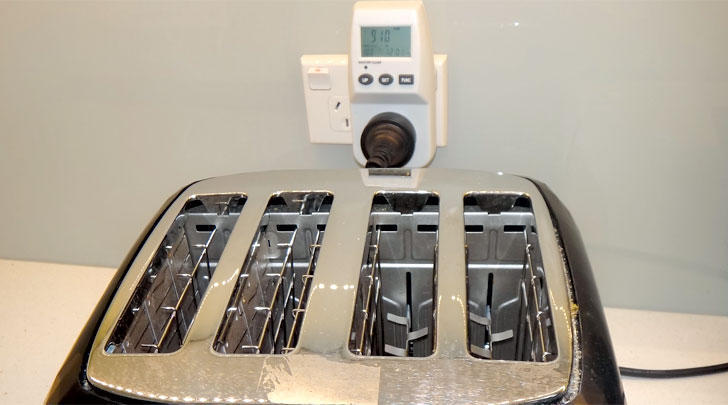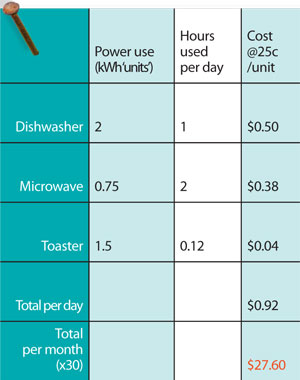At home
Measuring your power use
Eion Scott

With a power meter bought from a hardware store for around $30 you can test how much energy an appliance is using – not only when it is on, but also when it is on standby.
A computer, for instance, will still use power when it is hibernating, as will a microwave that is plugged in but not in use. You can normally tell which appliances are using power on standby if they display a red light or clock, or emit a hum or are warm to touch.
Expert tip
A simple $30 power meter cannot be used with anything that is hardwired such as ceiling lights, ovens and hot water cylinders. For that, you can buy a slightly more expensive wireless monitoring device (for one example, see www.centameter.co.nz). You can tell at a glance what power you are using at any moment throughout the house. Switching appliances off progressively will then show you what each one costs to run.
How to check your power use
Step 1: Choose which appliance you want to check – you can choose almost anything that uses power: TVs, washing machines, heaters, toasters, phone chargers, stereos, lamps etc.
Step 2: Switch your appliance off at the wall, unplug it and plug the power meter into the wall socket.
Step 3: Plug the appliance into the power meter.
Step 4: Switch the wall switch back on, and turn the appliance on to the setting you want to check. For example, you can check your TV’s electricity use when it is on, and while it is on standby. Write the figure down under ‘power use’ on a piece of paper
Step 5: To check an appliance like a fridge, a one-off check is not always accurate. This is because the appliance switches on and off, so may not be running when you perform the check. What you can do is leave it plugged in (through the meter) overnight. The meter will measure the total usage and you can then average over that period.
Step 6: Once you have measured the usage of each appliance and written the figures down, estimate how many hours each day you usually run each appliance. Write the number down in a second column.
Step 7: To work out what each appliance is costing you multiply each ‘spot’ running cost – the number in the ‘power use’ column – by the number of hours a day you run it, then multiply this by the cost of power (approximately 25c per unit). Write this figure down in a third column, then add up your costs, and you will soon understand where your power goes and what you can do to reduce your electricity bill.

